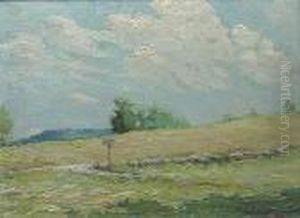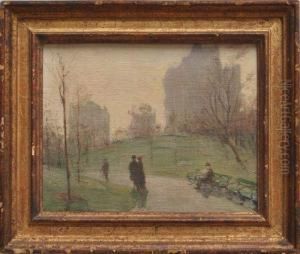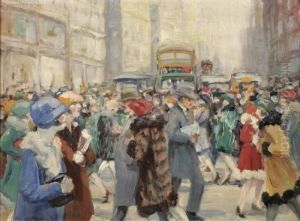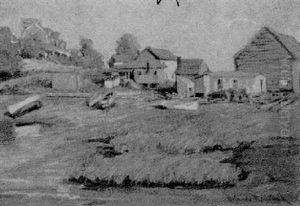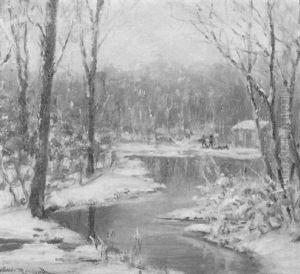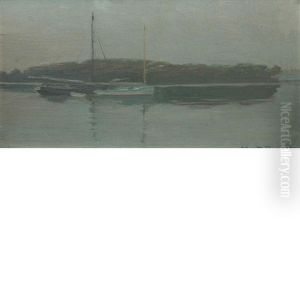Orlando Rouland Paintings
Orlando Rouland was an American painter, born in 1871 in Somers, New York. His artistic talent became evident early on, and he pursued his education in the arts at the National Academy of Design in New York City. He furthered his studies in Europe, which was a common practice for many American artists of the time, seeking to refine their techniques and absorb the rich artistic traditions of the Old World.
During his career, Rouland became known for his portraits, landscapes, and genre scenes. He had a particular talent for capturing the essence of his subjects in his portraits, which led to a number of commissions from prominent individuals. His work reflects the influence of his European training, yet retains a distinctive American character.
Rouland's style was rooted in the academic tradition, but he also embraced the impressionist movement's interest in light and color. His landscapes often depicted the American countryside, showing a deep appreciation for its natural beauty. Throughout his career, he exhibited his work at major venues such as the National Academy of Design, the Pennsylvania Academy of the Fine Arts, and the Art Institute of Chicago.
In addition to his painting, Rouland also engaged in teaching, passing on his knowledge and skills to a new generation of artists. His contribution to American art was recognized in his time, and his works can still be found in the collections of various museums and private collectors.
Orlando Rouland's death in 1945 marked the end of a career that had spanned several decades and had seen significant changes in the art world. Despite the shifts in artistic trends, Rouland remained true to his vision, creating works that were both personal and reflective of the broader American experience.
